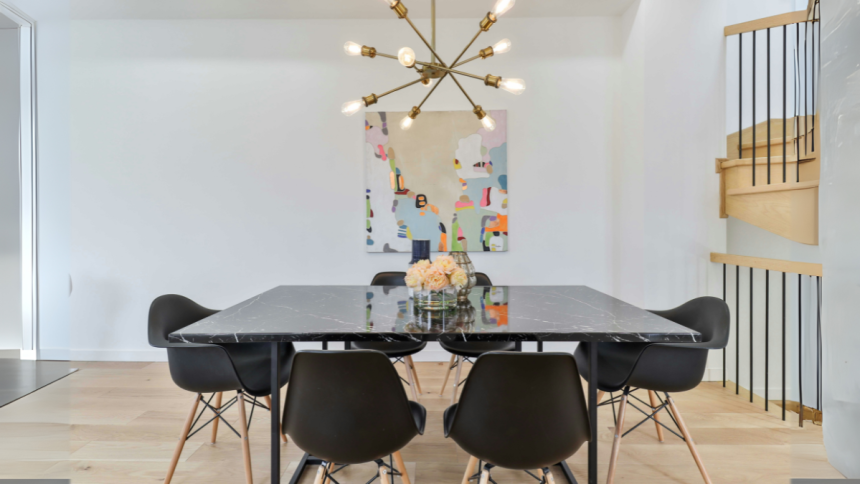Homeowners and designers trade predictability for power in today’s evolving interior design world. The once-humble table base has emerged from the shadows to become a showstopping element of modern furniture. Designer metal table bases are no longer just a supporting act—they’re the bold lead that shapes the aesthetic tone of a room. More than just functional, these sculptural forms redefine how we perceive and use interior space.
The Evolution from Functional to Form-Forward
Historically, table bases were an afterthought. Their primary role was simple—to support the tabletop. But that functional narrative has transformed. With the rise of industrial influences and minimalist aesthetics, steel table bases have morphed into artistic expressions. Crafted by skilled metalworkers and visionary furniture designers, today’s bases are geometric, expressive, and commanding. They tell a story, channel craftsmanship, and bring personality to what was once utilitarian.
Why Steel? The Power of Material Choice
Among all available materials, steel stands out for its resilience, flexibility, and undeniable modern charm. Its clean lines and ability to be manipulated into intricate or minimal shapes make it the perfect medium for statement pieces. Unlike wood, which may warp over time, or plastic, which can feel temporary, steel offers a sense of permanence. It brings an urban edge to interiors while blending effortlessly into rustic, industrial, or Scandinavian themes.
A Statement of Strength and Sophistication
Metal table bases signal more than durability—they radiate confidence. The weight and precision of steel construction evoke strength, while the smooth, powder-coated finishes or raw patinas add layers of sophistication. These bases often feature intersecting beams, cantilevered forms, or unexpected curves, making them look more like art installations than structural components.
The Designer’s Touch: Where Art Meets Engineering
Custom metal bases aren’t pulled from factory molds. They are forged through collaboration between engineers and designers who understand that a table base can shape the entire room’s visual balance. Whether it’s a crisscrossed X-frame under a live-edge wood slab or a sculptural ring supporting a glass top, the design process is highly intentional. Every curve, weld, and angle is calculated to maximize aesthetic impact and functional integrity.
Open Concepts, Strong Anchors
As open floor plans dominate modern living spaces, every piece of furniture must carry visual weight. A designer metal table base does just that. It anchors an open-concept dining room or living area without overwhelming the space. Its reflective qualities can enhance light, and its clean geometry gives structure to more fluid layouts. Strong table bases provide the spatial definition designers crave in spaces where walls no longer define rooms.
Customization for Character
One of the greatest advantages of choosing a sculpted metal base is the endless opportunity for customization. Whether opting for matte black finishes, brass-toned steel, or hand-forged raw looks, homeowners can tailor the base to match their style. Some prefer a minimalist style, characterized by thin, angular lines. Others lean toward drama, choosing bold, oversized shapes that challenge traditional proportions. Whatever the direction, customization ensures no two pieces are ever quite the same.
Balancing Weight with Style
There’s a delicate art to creating a visually striking and appropriately scaled base. An overly bulky base can make a space feel heavy, while an underwhelming design might get lost beneath a tabletop. The best designers strike that perfect balance, providing enough presence to stand out without overwhelming the room. This careful proportioning contributes to the overall harmony of the interior.
Pairing with a Variety of Table Tops
Versatility is one of steel’s greatest strengths. These bases pair beautifully with a wide range of tabletops—from reclaimed wood and polished marble to clear or smoked glass. The contrast between warm, organic materials and cool metal creates a dynamic interplay of textures that feels refined yet grounded. Designers often exploit this tension to craft curated, rather than cataloged, interiors.
Investing in Timeless Design
Trends may come and go, but sculpted metal bases have proven their staying power. Their durability ensures they’ll last for generations, and their timeless aesthetic makes them a wise investment. As more homeowners move away from mass-produced furniture, there’s an increasing appreciation for pieces that reflect craftsmanship and originality. Steel bases, especially those custom-designed or handcrafted, represent a seamless blend of utility and artistry, offering an enduring appeal.
The Impact on Interior Storytelling
Every room tells a story, and its furniture plays a leading role. A thoughtfully chosen metal table base says something about its owner—it suggests a respect for structure, a love for bold forms, and an eye for detail. It’s not just about supporting a tabletop; it’s about elevating the atmosphere of the entire space. These pieces invite conversation, admiration, and interaction in a way few traditional furnishings can.
In today’s interior design landscape, the table base has evolved into more than a structural necessity—it’s now a signature element defining a space’s personality. Crafted from steel and shaped by design visionaries, it transforms into a sculptural statement that balances strength, style, and innovation. As trends shift toward authenticity and bold aesthetics, these metal foundations continue to command attention, offering timeless, functional, and visually appealing designs.
Lynn Martelli is an editor at Readability. She received her MFA in Creative Writing from Antioch University and has worked as an editor for over 10 years. Lynn has edited a wide variety of books, including fiction, non-fiction, memoirs, and more. In her free time, Lynn enjoys reading, writing, and spending time with her family and friends.















